High quality Pleurotus eryngii cultivation technology: Cultivation season Pleurotus eryngii is a low-temperature mushroom that can produce two seasons a year. It produces mushrooms in spring and autumn, ie, January-February or August-September, February-April or September- Mushrooms are released in December. 2. Bacteria bag making (1) Culture material formulation and preparation. Formulation 1: 73% wood chips, 25% bran, 1% lime, 1% gypsum, water content 60%-65. Formula 2: cottonseed hull 88%, bran 10%, lime 1%, gypsum 1%, water content 60%-65%. Mix the ingredients and mix well to make a culture. (2) Bagging, sterilization, inoculation and culture. The culture material was placed in a bacteria bag (specification: 22 cm × 45 cm) as required, sealed and placed in a sterilization pot for sterilization. Start with a fierce fire to raise the temperature inside the pot to 100 degrees Celsius, and then suffocate for 4 hours to 5 hours after 8 hours to 12 hours, then remove the bag. When the bag is cooled to normal temperature, it is placed in a sterilized inoculation box (chamber), and the inoculum is 5%-10%. The inoculated bag is sent to a sterilized culture chamber, and the room temperature should be controlled between 20 degrees Celsius and 25 degrees Celsius. About 30 days, the hyphae can be full of bags, and then moved to the mushroom house to produce mushrooms. The culture room requires darkness, ventilation, and humidity. 3. Row of bag mushrooms Set up the cultivation rack in the mushroom house, stack the cultured bacteria bags horizontally on the shelf or on the ground. When the temperature drops to 10 degrees Celsius - 18 degrees Celsius, sprinkle water on the ground to increase the humidity in the mushroom house. The scattered light in the mushroom room is strong and the light is bright. 4. Mushroom management (1) Temperature control. The temperature range of the formation and growth of Pleurotus eryngii fruit bodies is narrow and extremely sensitive to temperature. The most suitable mushroom temperature is 15 degrees Celsius - 17 degrees Celsius, which should be strictly controlled. (2) Humidity adjustment. During the growth of the fruiting body, the humidity in the mushroom house is lower than that in the previous mushroom, and it is suitable to maintain about 85%. When moisturizing, mainly water the ground, avoid spraying water on the fruit body and the mouth of the bag. (3) Light management. Keep the light in the mushroom room bright and the scattered light (no direct sunlight). (4) Ventilation and ventilation. Open the door (window) about 2 times - 3 times a day, each ventilation for about half an hour. 5. Harvesting It takes about 10 days from the formation of the primordium to the harvesting, and is harvested when the diameter of the fruit body cap is 4 cm - 6 cm (the cap is separated). After harvesting, cover the bag mouth with a paper seal and stop spraying water. After about 5 days, spray water to increase the humidity to induce the growth of the second mushroom. The yield of Pleurotus eryngii is mainly concentrated in the first one, and the weight of each mushroom can reach 600 grams, and the average yield per bag can reach 500 grams. After the second sputum, the amount of mushrooms decreased. Pleurotus eryngii effect: Pleurotus eryngii is rich in nutrients, rich in protein, carbohydrates, vitamins and minerals such as calcium, magnesium, copper and zinc. It can improve the body's immune function and has anti-cancer, hypolipidemic, gastrointestinal and cosmetic effects. 1, rouge blood pressure: can soften and protect blood vessels, has the effect of reducing blood lipids and cholesterol in the human body. 2, improve immunity: protein is the most important nutrient to maintain immune function, is the main component of white blood cells and antibodies. 3, digestion: help the secretion of gastric acid and digestion of food, suitable for the treatment of dietary stagnation. When selecting, we should pay attention to the fact that the more dense and firmer the stalk tissue of Pleurotus eryngii, the better the color of the stalk is white and smooth. If the color is darker, the broken part is too old, too thick and too thin. Too thick indicates too old, too detailed to be too tender. It is also worth noting that the base of Pleurotus eryngii is coarse and normal. You don't need to worry, you can buy it normally.
Pipeline Inner Anti-corrosion Tape
I. Description:
Pipeline Inner Anti-corrosion Tape is Cold applied tape coating system for corrosion protection of Oil, Gas, Petrochemical, and Waste Water underground or overhead pipelines.
The inner-layer tape shall be applied after the primer and before the outer-layer tape by hand or with a wrapping machine
â…¡.Structure
The specification of the tape consists of two layers, adhesive layer and film backing
Adhesive: butyl rubber
Outer layer: Special blend of stabilized polyethylene
III .Features
Excellent adhesion to pipe and self
Resistant to UV
Can be applied over a wide temperature range
Good conformability and consistent uniform thickness
Easily applied with no special equipment
Compatible with common pipe coatings
Excellent resistance to cathodic disbonding
Meets ASTM D 1000 Standard
Cold applied
â…£.Technical datas:
Pipeline Inner Anti-corrosion Tape Inner Anti-corrosion Tape, Polyethylene Inner Wrap Tape, PVC Pipe Wrap Tape For Pipeline, Metallic Pipeline Wraps Jining Xunda Pipe Coating Materials Co.,Ltd , http://www.pipe-wrap.com
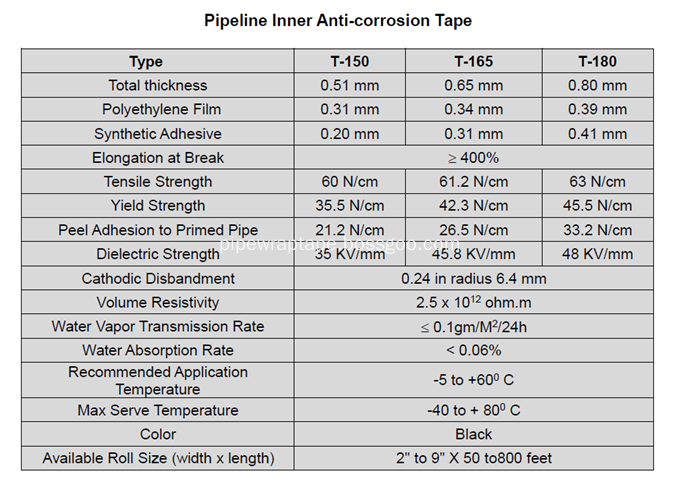

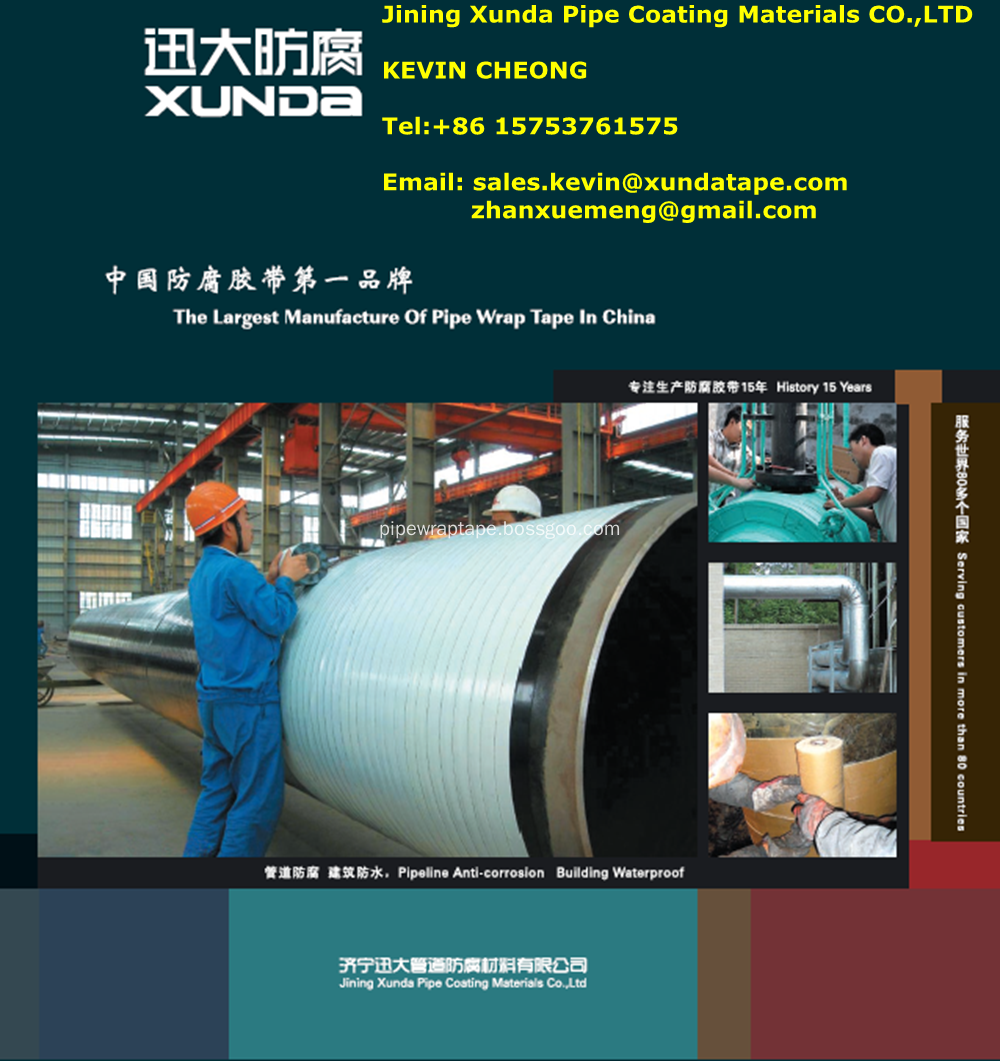
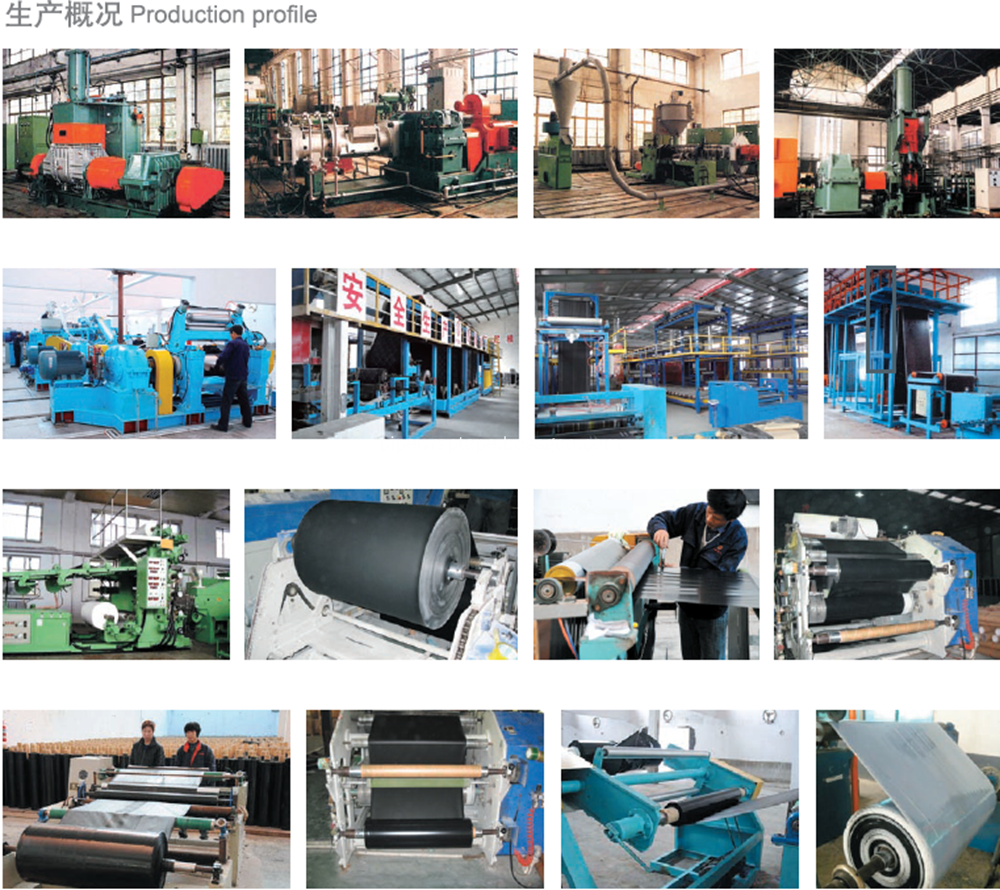
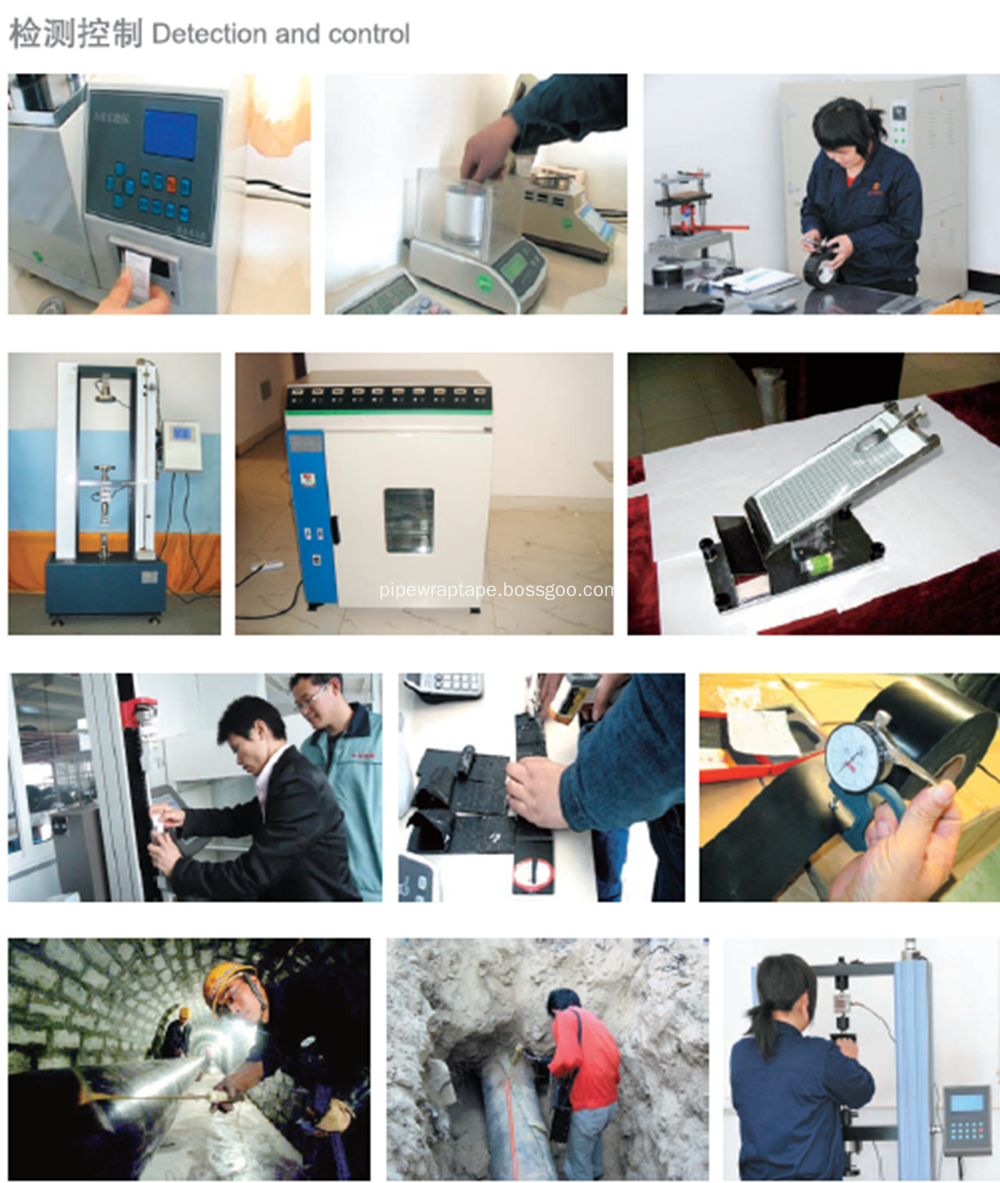

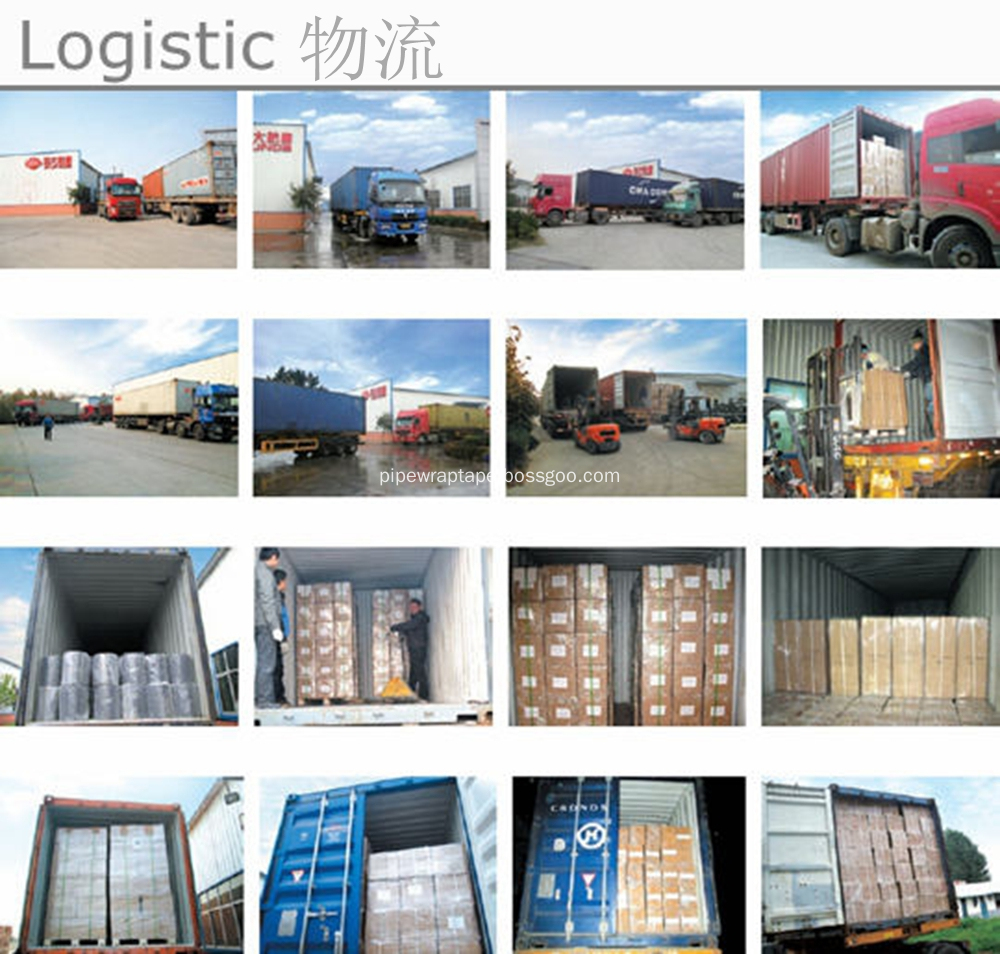
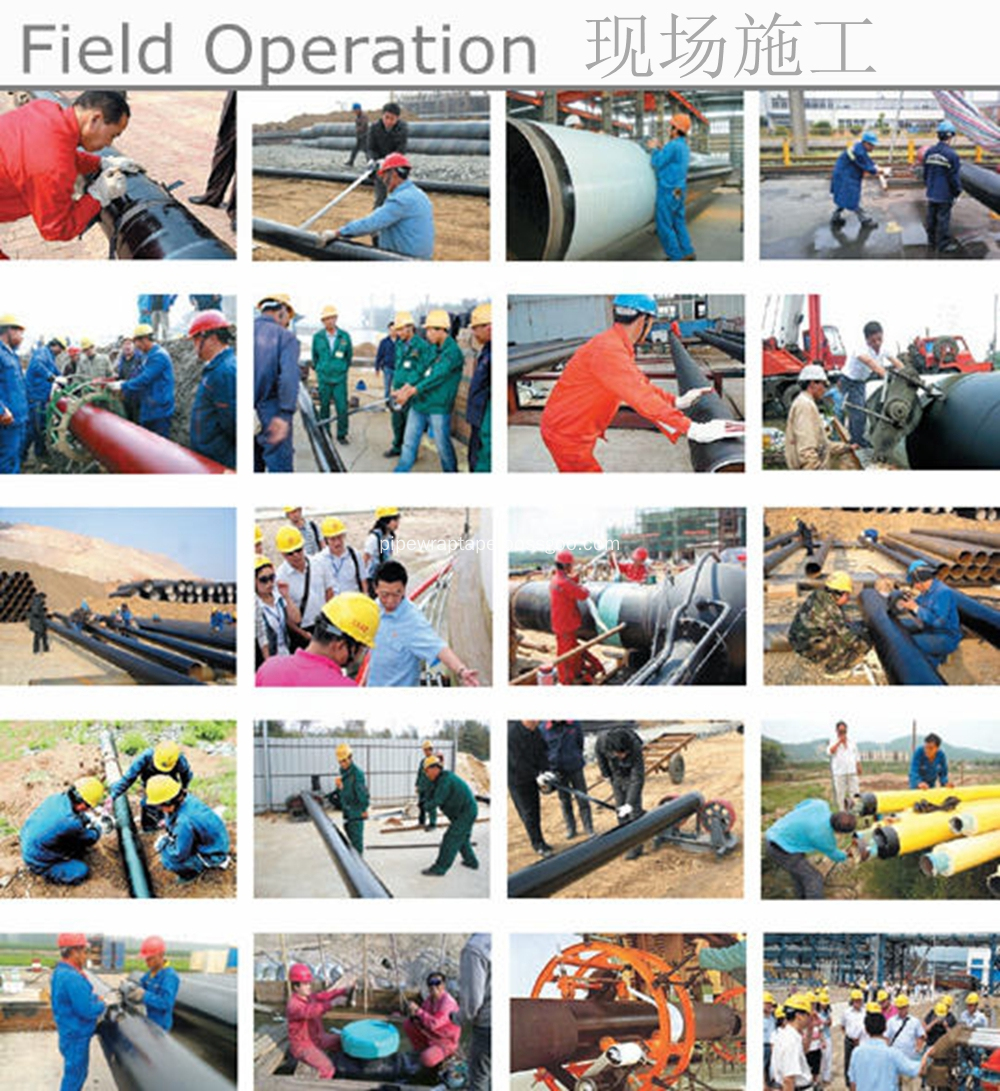
Total 1 | <First <Prev 1 Next> Last> |
share to: